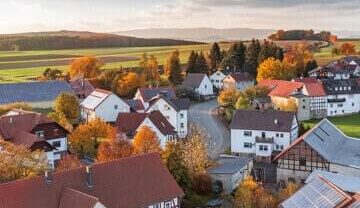Supply vs Demand
Suburbs with higher number of owners occupiers
More than 65% owners-occupiers in suburbs indicate growth.
Equation: Number of owners occupiers in suburb / Total suburb population * 100.
Suburbs with lower vacancy rates
If there are 200 rental properties in a suburb and 4 of them are vacant, then the vacancy rate is 2%.
Equation: (4/200 x 100).
Suburbs with high rental yields
When rents are going up (find this from the local property manager)
Historical growth trends of suburbs/area
Nearby suburbs with strong growth (‘ripple effect’)
People get out of the priced suburb and they will go to the next close suburbs pushing up prices there
Suburbs with potential for domino effect
The median price of properties in the cheaper suburbs may rise which have not yet experienced growth but they are neighbourhoods of the suburbs that have experienced a price growth spurt in the last 12 months, usually within 10 kilometres of the CBD.
Council’s activities
Better and more future planned development (types of development) approvals for particular suburbs/areas = more growth
Council expands = the suburb grows = more growth
Supply of development: undersupply of investment-grade stocks can have a boomerang effect on the property
Local developments – roadwork, transportation improvements, corporate development, medical & education facilities and new amenities
Catchment zones and zoning classifications
Not in flood zones and bushfire zones but in extensive landscaping overlays (big land – ideal for more owner-occupiers) and within the catchment area of a good public school (ideal for young families). Zoning indirectly effects and value and tax rates.
Days on Market (DOM)
Low DOM count = more growth areas, high demand. DOM in a balanced market should be 85 – 100 days.
Vendor’s Discount
(Difference between asking price of properties sold in a suburb and the actual sold price) / Asking price * 100
Vendor discount below 5% indicates a seller’s market, high demand of properties, high growth
Auction Clearance Rate (ACR)
Percentage of: properties that sell via auction compared to the total number that go to auction each week.
ACR above 60% indicate seller’s market, high demand of properties, high growth
Stock on the Market (SOM)
Number of properties listed on market in suburb / total properties in that suburb *100
Anything around 1% SOM and lower is better since it indicates less supply. Anything higher than 3% indicate an oversupplied
Developers are the enemy of property investors since they add extra supply, killing growth potential. They might be selling a complex of 48 units. But the listing site may only show a single sample one-bedroom unit, a sample two-bedroom unit, and a sample penthouse three-bedroom unit.
Online Search Interest (OSI)
Property listing websites like realestate.com.au or domain.com.au keep track of searches that users perform online.
OSI is a ratio of the number of people searching online (RE.com.au, domain.com.au) for property in a specific location / the number of properties available for sale in the same location. Above 40 is showing positive signs of online interest.
Potential for renovations or development
If a home can be renovated to add value and later sell then that becomes attractive to an investor. If there’s space to add a pool, another bedroom or even another storey, the property becomes more attractive and valuable.
Interest rates
When home loan interest rates fall, which makes it affordable to buy a home, pushes the property prices up. When RBA raises rates, mortgages become less affordable.
Capital gains tax
Effect on the property market- Decrease in CGT can boost investment and reallocation of capital, hence impacting the property market by hundreds of millions (over the long-term).
The economy
Things like unemployment, wages, GDP, prices of goods, population growth and the Aussie dollar all affect how much money everyone has and consequently, how many people can afford to buy a home.
Diverse growth factors
So, in short, property prices may also depend (in the long run) on the number of drivers a local economy has. For example: rather than just the mining industry close by (which can shut down any time).
Government Policies/Subsidies
Government incentives such as tax credits, deductions, and subsidies (First home grant, builder grants etc) can help you determine temporarily boost in demand and potentially false trends.
Overseas buyers
Entry of foreign buyers in large numbers can shoot the property price up.
Features of properties
In a balanced market, only features would be the only variables affecting the price of property
Locationscore.com.au: For short term capital growth. Try the suburb you want to analyse in location score.
Demographics:
Good lifestyle area: Good lifestyle area, not close to jails, power plant, airport, dump site & not residing in a low-socio-economic area
Infrastructure: High employment rate areas, jobs nearby translates to a low rental vacancy rate.
Proximity to Amenities: Shops, restaurants, cafes, medical facilities, public services and parks
Safety: Where crime is low.
Transportation: The speed and ease of the commute to the city centre (by car, bicycle, foot, or public transportation)
Location: Proximity to a CBD, affluent neighborhoods or desirable landmarks like shopping centres or the beach.
Population: Such as median age, race, gender, income, migration patterns, population growth and the total population to understand who will likely be your target market of renters. If the suburb’s median age is old but the population and the average income is increasing, this can be an indication that the suburb is growing. If you live in a suburbia which is family dominated, three and four-bedroom homes will be more expensive. While in CBD areas, one and two-bedroom apartments will be more in demand from workers and students. Potential of population growth or population explosion encourages chronic property shortage.
Signs of gentrification: Is there any movement of affluent residents into the suburb? This can indicate that the area is set to boom. Some signs of gentrification are increases in the quality of cafes and restaurants in the neighbourhood, homes being renovated, and good cars parked in the driveway. An increasing number of young residents with good incomes can also indicate that the suburb is being gentrified.
Appearance and aesthetics: Very few people want to live in a home that looks rundown on the outside, even if it is lovely on the inside. The way a house looks from the outside can instantly add or subtract tens of thousands of dollars from its value.
Street trees: Trees on the street verge increases median property prices by about $16,889.
Storage space: Having a garage or a dedicated storage cage can add up to $8000 per square metre in value (more important for apartments, where space is limited)
#investorpartnergroup #helpmebuyau #propertyinvestor #ipgroup




